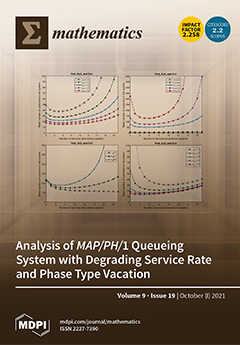In this paper, the concept of a
k-(quasi) pseudo metric is generalized to the
L-fuzzy case, called a pointwise
k-(quasi) pseudo metric, which is considered to be a map
[...] Read more.
In this paper, the concept of a
k-(quasi) pseudo metric is generalized to the
L-fuzzy case, called a pointwise
k-(quasi) pseudo metric, which is considered to be a map
satisfying some conditions. What is more, it is proved that the category of pointwise
k-pseudo metric spaces is isomorphic to the category of symmetric pointwise
k-remote neighborhood ball spaces. Besides, some
L-topological structures induced by a pointwise
k-quasi-pseudo metric are obtained, including an
L-quasi neighborhood system, an
L-topology, an
L-closure operator, an
L-interior operator, and a pointwise quasi-uniformity.
Full article





